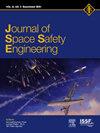空间系统安全和任务保证案例研究为基础的研究生教育
IF 1.7
Q3 ENGINEERING, AEROSPACE
引用次数: 0
摘要
最近,在政府机构和私营企业中,都有大量关于将载人任务送入太空的讨论。考虑到过去几年进行的值得注意的测试和准备工作,将宇航员送回月球,并首次送往火星,似乎让世界各地的太空爱好者感到兴奋。向太空发射载人任务的决定主要取决于三个方面:技术、预算和任务风险。即使解决了前两个方面的问题,第三个问题仍然存在:它是否足够安全?一般来说,空间系统的安全和任务保证(S&;MA)是从操作的角度在空间系统项目中教授的。在美国,很少甚至没有课程从设计工程的角度来解决空间工程硕士的问题。在全国各地提供的工程课程中,以伦理为基础的安全文化教学也很有限。毕业生的空间科学与工程硕士知识与进行空间系统设计工程所需的技能之间的差距,目前主要由航天机构和私营航天工业填补。本文提出的研究生课程框架建立在以学生为中心的方法上,通过定制的案例研究经验,促进理解和动机,这是在考虑保护人类生命的情况下做出基于风险的决策的重要方面。通过探索人类太空飞行的近距离呼叫、事故和灾难的根本原因,学生可以想象自己在太空操作环境中,并可以意识到设计工程、安全文化和道德如何通过前馈和反馈机制相结合来确保可靠和安全的操作。然后,连接回理论课程材料创造学生的理解和动力,一旦他们毕业后作为决策者。拟议的基于案例研究的课程框架还促进空间系统设计安全工程方面的批判性思维和问题解决。理解和动机,加上批判性思维和解决问题的能力,有望证明以案例研究为基础的教学的有效性,并支持灌输学生道德决策,其组成部分包括诚信、问责和责任。本文章由计算机程序翻译,如有差异,请以英文原文为准。
Space systems safety and mission assurance case study-based graduate education
There is a significant number of discussions lately, at both government agencies and private industry, about sending crewed missions further into space. Sending astronauts back to the Moon and, for the first time, to Mars seems to make space enthusiasts around the world excited given the noteworthy tests and preparations going on in the last few years. The decision to launch crewed missions into space depends primarily on three aspects: technology, budget, and mission risk. Even when the first two aspects are addressed, the third question still remains: is it safe enough? Generally, Safety and Mission Assurance (S&MA) for space systems is taught in space systems programs from an operations standpoint. There are very few to no courses across the USA that address space S&MA from the design engineering perspective. There is also limited teaching of ethics-based safety culture in the engineering programs offered across the country. The resultant gap between graduates’ knowledge of space S&MA and the needed skills to conduct design engineering of space systems is, at the moment, mostly filled by the space agencies and private space industry. The graduate course framework presented in this paper is built on a student-centered approach through customized case-study experiences that promotes understanding and motivation, which are significant aspects of making risk-based decisions with considerations to safeguarding human lives. By exploring the root causes of human space flight close calls, incidents, and mishaps, students can envision themselves in the space operational environment and can become aware of how design engineering, safety culture, and ethics act through a combined feedforward and feedback mechanism to ensure reliable and safe operations. Then, connecting back to the theoretical course material creates the student's understanding and motivation once they act as decision-makers after graduation. The proposed case study-based course framework also promotes critical thinking and problem-solving for the safety engineering aspects of the design of space systems. Understanding and motivation, together with critical-thinking and problem-solving is expected to prove the efficacy of case-study-based instruction and support instilling student ethical decision making, with its component parts of integrity, accountability, and responsibility.
求助全文
通过发布文献求助,成功后即可免费获取论文全文。
去求助
来源期刊

Journal of Space Safety Engineering
Engineering-Safety, Risk, Reliability and Quality
CiteScore
2.50
自引率
0.00%
发文量
80
 求助内容:
求助内容: 应助结果提醒方式:
应助结果提醒方式:


